Why Did We Conduct This Test
We are all constantly bombarded with wild claims about supercharger kits – how much power they add and why one style of supercharger system is superior over the others. Most magazines shy away from head-to-head comparison tests because there is always one winner and lots of losers – not too good for the advertising side of their business. Jerry Magnuson founder of Magnuson Products wanted to put all of those wild advertising claims to rest, and to prove that his company’s Magna Charger hybrid/roots style of supercharger is the ultimate “street” supercharger system available. Read on after the jump to see how the different superchargers stack up to one another.
Our Background
Jerry Magnuson has been building supercharger systems for more than 40 years. His current Magna Charger systems have been adopted by some of the world’s top supercar builders and tuners and can be found on Callaway’s line of Corvettes and Camaros as well cars from Lingenfelter, MTI Racing, Hurst Performance Vehicles, and Hennessey. Noted engine builders such as Kenny Duttweiler of Duttweiler Performance has incorporated the Magna Charger supercharger system into his 760hp LS2 crate motor program and swears by the Magna Charger’s reliability and lack of required maintenance. “You just install it and forget it,” quips Duttweiler – who’s had one of these crate motors in his daily driven GTO for more than 10,000 miles.
The Test
Due to the endless variables, most past supercharger shootouts have ended up comparing apples to oranges. To find out the real truth, the actual comparison test needed to be extremely controlled – same engine tested on the same day with the same ambient air temperature. The fuel would be 91-octane pump gas, all from the same source and batch. To truly evaluate the supercharger only, the same Magnuson equal-length-runner intake manifold with integral water-to-air intercooler was used. The peak boost target was 7.5psi @ 6500rpm , so pulleys and drive ratios were adjusted to reach that target for all systems. Each supercharger was finely tuned to a near-perfect 12:1 fuel/air ratio.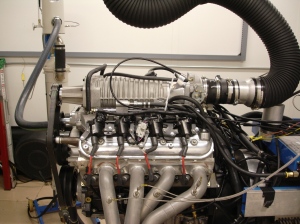
A totally mainstream engine was selected for the test – a GM LS-style 5.3 truck engine. It remained totally stock except for a Lingenfelter Performance Engineering GT2-3 cam with Corvette ZO6 valvesprings, both needed to extend the power cure through 6500rpm. Like mentioned previously, it used a Magna Charger intake manifold and intercooler plus Bosch “Green” fuel injectors and a 90mm LS2 throttle body.
The superchargers for the comparison included three Magna Charger models, a standard 112, a hybrid 112 and a hybrid 122. They also tested a Whipple Twin-Screw 2300 and a Procharger centrifugal model. The dyno test measured several parameters including supercharger discharge temperature, intercooler discharge temp, boost curves and of course horsepower and torque curves. By using the same manifold and intercooler for all tests, the changeover and back-to-back testing was accomplished in a single day. Also, Magnuson’s location just off the ocean in Ventura California ensured that the ambient temperature varied just 15-degrees over the entire test.
The Results
The dyno confirmed what Jerry has been stating for years – “Run the smallest supercharger that will provide your target boost level. It will be more responsive (make boost sooner) and will require less horsepower to drive.” In this test the Magna Charger MP112 outperformed every other supercharger with the most average horsepower and torque over the 1500-6500rpm powerband, and when you look at certain points along the power curve the differences are spectacular. For example at 1500rpm the Magna Charger 112 is producing 400 ft. lbs. of torque and the Procharger centrifugal supercharger is just 280 ft. lbs. That’s similar to the difference between driving a small-block versus a big-block. The gap in performance actually increased at 3500rpm – Procharger’s 380 ft. lbs. to the Magna Charger’s 515 ft. lbs. In fact, the Procharger doesn’t catch up until the 6500rpm cut off and we don’t think anyone wants to rev a stock shortblock over 6500 do they?
The other superchargers faired much better but due to their respective size or capacity, they were at a disadvantage to the mighty little MP112. The Whipple 2300 screw is better suited for larger engines or higher rpm. At 1500rpm it gave up 50 ft. lbs. to the MP112 (350 ft. lbs. to 400 ft. lbs.) and only caught up and crossed over (making more power) at 5700rpm.
What to Take Away From This Test
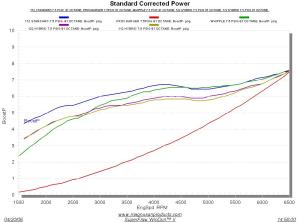 A final analysis clearly shows that the most important factor for a street supercharger is the boost curve. When you hit the throttle at 1500rpm, what boost is your supercharger making? From an overall efficiency viewpoint, all of the superchargers are pretty close with similar discharge temps dumping into the manifold and past the intercooler. Horsepower at 7.5psi at 6500 is almost identical for all supercharger systems. The real difference is the amount of torque “under the curve” from 1500-6500rpm and the Magna Charger MP112 wins hands down. A Magna Charger-powered vehicle will be long gone by the time the screw or centrifugal supercharger’s boost curves catch up.
A final analysis clearly shows that the most important factor for a street supercharger is the boost curve. When you hit the throttle at 1500rpm, what boost is your supercharger making? From an overall efficiency viewpoint, all of the superchargers are pretty close with similar discharge temps dumping into the manifold and past the intercooler. Horsepower at 7.5psi at 6500 is almost identical for all supercharger systems. The real difference is the amount of torque “under the curve” from 1500-6500rpm and the Magna Charger MP112 wins hands down. A Magna Charger-powered vehicle will be long gone by the time the screw or centrifugal supercharger’s boost curves catch up.
One final note: all engines that run on pump gas are compression limited and when you add boost to an engine you are essentially adding compression. Regardless of supercharger style, there is a limit that if exceeded will destroy the engine. With 91-octane pump gas that limit seems to be around 7.5psi with an effective intercooler. So be wary of huge horsepower claims on pump gas – they’re simply not sustainable within the detonation limits of most production engines.

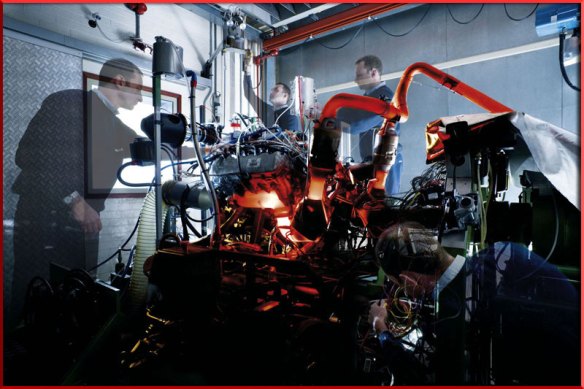
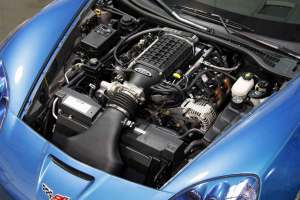
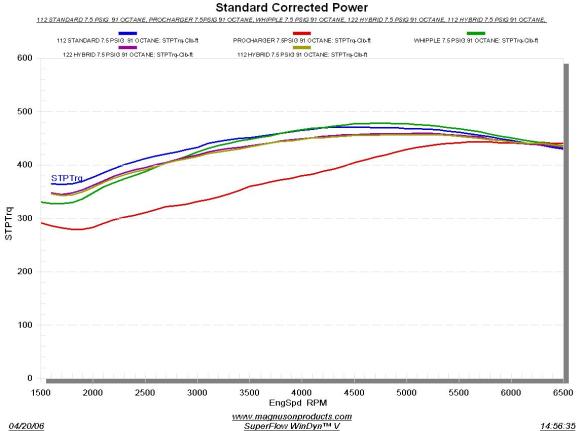
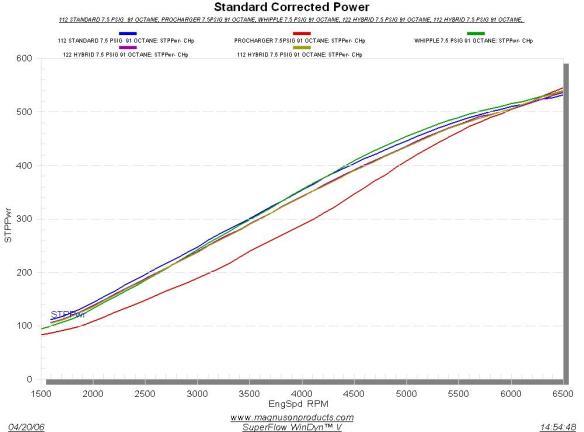
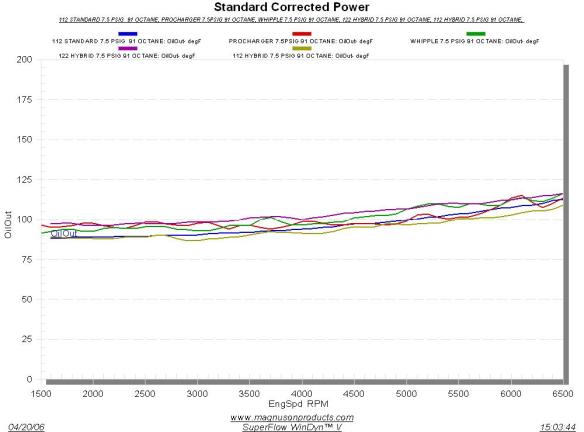
good info thanks for the test im very hard thinking about adding one to a 2010 truck
am working up info on the m22 w/by pass valve setup. 350 SBlock Chevy, wanted Vortec heads style, but regular can work. really confused on boost and 91 octane ..so mant different stories.. am looking at reasonable Boost 6 or 6.5 max.. 9.20 static CR area..probably close, maybe not..Cam timing intake close 60 ABDC ..at .060 thanks for the quality superchargers…
DO YOU HAVE A KIT FOR 2011 AND 2012 RT DODGE CHARGERS.